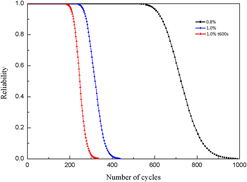Crossref Citations
This article has been cited by the following publications. This list is generated based on data provided by
Crossref.
Du, Weiqi
Luo, Yuanxin
and
Wang, Yongqin
2018.
A hybrid directional step method for minimum performance target point search.
Applied Mathematical Modelling,
Vol. 62,
Issue. ,
p.
103.
Xu, Shen
Zhu, Shun-Peng
Hao, Yong-Zhen
Liao, Ding
and
Qian, Guian
2018.
A new critical plane-energy model for multiaxial fatigue life prediction of turbine disc alloys.
Engineering Failure Analysis,
Vol. 93,
Issue. ,
p.
55.
Zhang, Wei
Jiang, Tao
and
Liu, Liqiang
2019.
Low Cycle Fatigue Life Prediction Model of 800H Alloy Based on the Total Strain Energy Density Method.
Materials,
Vol. 13,
Issue. 1,
p.
76.
Vojdani, A.
and
Farrahi, G.H.
2019.
Reliability assessment of cracked pipes subjected to creep-fatigue loading.
Theoretical and Applied Fracture Mechanics,
Vol. 104,
Issue. ,
p.
102333.
Du, Weiqi
Luo, Yuanxin
Wang, Yongqin
and
Ma, Ling
2019.
A general framework for fatigue reliability analysis of a high temperature component.
Quality and Reliability Engineering International,
Vol. 35,
Issue. 1,
p.
292.
Zhu, Shun‐Peng
Hao, Yong‐Zhen
de Oliveira Correia, José A.F.
Lesiuk, Grzegorz
and
de Jesus, Abílio M.P.
2019.
Nonlinear fatigue damage accumulation and life prediction of metals: A comparative study.
Fatigue & Fracture of Engineering Materials & Structures,
Vol. 42,
Issue. 6,
p.
1271.
Liao, Ding
and
Zhu, Shun-Peng
2019.
Energy field intensity approach for notch fatigue analysis.
International Journal of Fatigue,
Vol. 127,
Issue. ,
p.
190.
Li, Xue-Kang
Chen, Sijia
Zhu, Shun-Peng
Liao, Ding
and
Gao, Jie-Wei
2021.
Probabilistic fatigue life prediction of notched components using strain energy density approach.
Engineering Failure Analysis,
Vol. 124,
Issue. ,
p.
105375.
Li, Xue-Kang
Zhu, Shun-Peng
Liao, Ding
Correia, José A.F.O.
Berto, Filippo
and
Wang, Qingyuan
2022.
Probabilistic fatigue modelling of metallic materials under notch and size effect using the weakest link theory.
International Journal of Fatigue,
Vol. 159,
Issue. ,
p.
106788.
Xu, Liujie
Song, Wanli
Jiao, Zhaolin
Xu, Zhaoning
Sun, Tielong
and
Wei, Shizhong
2022.
Evaluating cycle fatigue property of molybdenum alloy by new developed fatigue model.
International Journal of Refractory Metals and Hard Materials,
Vol. 107,
Issue. ,
p.
105907.
Liu, Jianhui
Wang, Jie
Wu, Kongyong
Yi, Xiangbin
Hua, Feilong
He, Yingbao
and
Zhao, He
2023.
Multiaxial notch fatigue probability modeling based on three-parameter Weibull distribution and effective strain energy density.
Journal of the Brazilian Society of Mechanical Sciences and Engineering,
Vol. 45,
Issue. 8,






